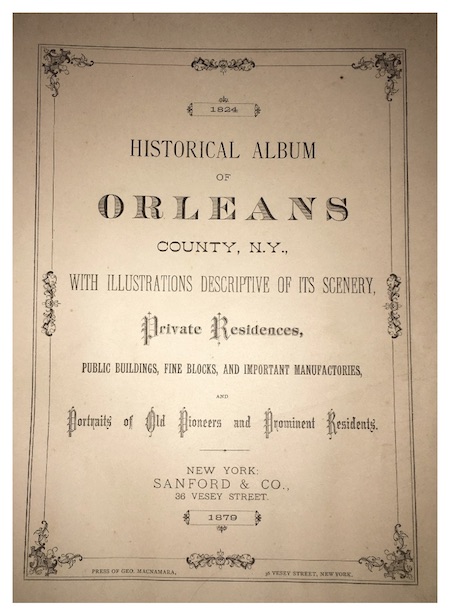Historic Childs: Recreation, Part 1
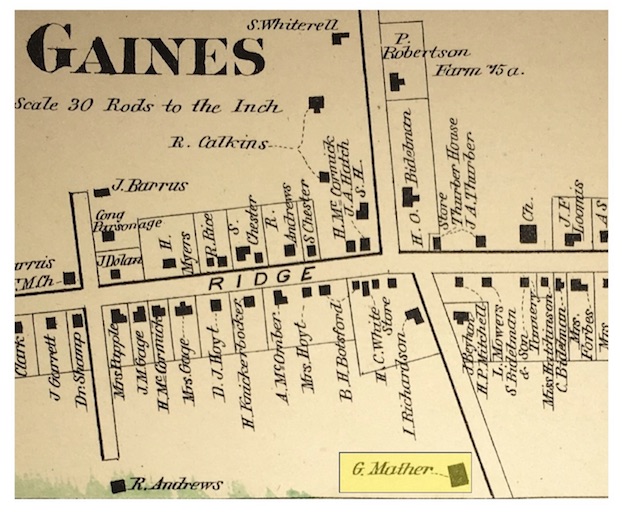
From the “Atlas of Niagara & Orleans Counties NY,” 1875
By Doug Farley, Cobblestone Museum Director — Vol. 2 No. 28
Every generation has enjoyed moments, even briefly, when more pressing tasks were accomplished, and a time of relaxation, albeit short, could be enjoyed with family and friends. Such was certainly the case for those living in the Hamlet of Childs and the surrounding countryside in the Town of Gaines.
One such diversion occurred on or about 1835. Historians in 1879 recalled with affection a certain horse race that took place in Gaines on the James Mather farm, southwest of the village on an elevated piece of land east of what was then the Albion Road(Route 279). Mather was an “old-order” farmer that arrived as reports say, “with money,” and paid cash for his land in 1810.
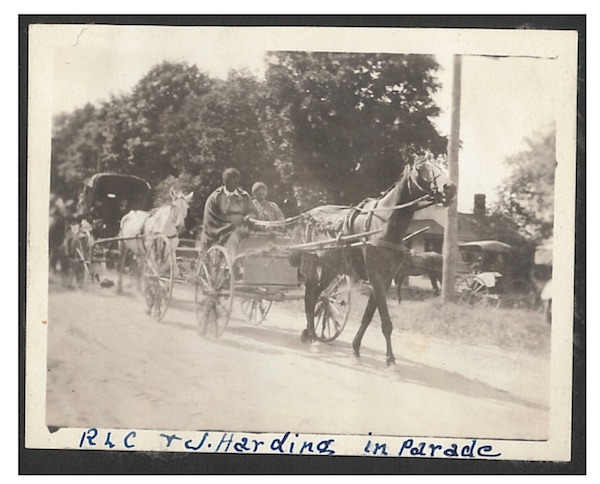
Horses from the neighboring Coloney Farm, Town of Gaines Centennial, 1909. Courtesy Gerald Coloney Monagan
The grandstand for the horserace and starter’s stand were located at the east part of the field. Five or six horses contended for the prize stakes. The race is further described by unnamed eye witnesses, as follows:
“The horses were not started as is the custom now, but they were ranged in line across the track and started off at the tap of a drum. It was a running race and was attended with a good deal of excitement. There was a great crowd in attendance, and many came from distant places. The road leading to the race ground was filled with booths and hucksters’ wagons, and the village streets were filled with teams and horses hitched to fence posts and trees. One of the features of the race was the great number of gamblers who came upon the race ground with their roulette tables, dice tables, and other instruments of their profession, and tempting little piles of gold and silver coin were displayed upon the tables. This race was the first and last of its kind, we believe, ever held in Gaines.”
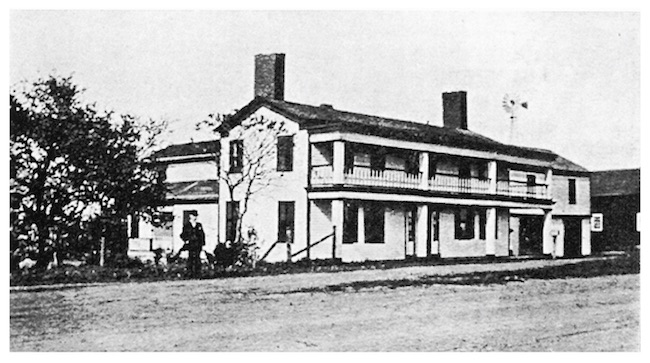
Five Mile House, circa 1909. Only the back wing remains today.
“Following this race, much attention was paid to the improvement of speed in horses, and for years the favorite ground for trying their speed and training trotting horses was the stretch of hard road on the Ridge east from Proctor’s Corners, and the straight mile stretch from East Gaines to the Five Mile House. Election days generally brought the horses out in full force. There were running races, trotting under the saddle, and trotting before light wagons; and although there was no recognized organization to direct the conduct of the races, as they were wholly impromptu, yet order was observed, and there was quite as keen an interest in the result as though all the machinery of the race course as now understood had directed the contest.”
Other regional recreational activities described in the “Historical Album of Orleans County,” written in 1879, included shooting matches, fox-chases, wrestling matches and hunts. In those days, great hunts were of frequent occurrence. These shooting contests usually involved choosing “sides,” as two or more teams competed for the honor of shooting the most live game. Fair play dictated that equal numbers of hunters must be entered on each side. After a full days hunt, the teams would meet at the tavern and count their spoils. The side with the least good fortune, suffered the expense of supper and copious libation for the opposing team. It was said that the “frolic” was fondly remembered for the full year between hunts. One member of the hunting party offered his remembrance:
“There is a tradition of a big hunt that took place about 1840, embracing a line of hunters extending across the entire Town of Gaines from Ridgeway to Murray along the Ridge Road, who struck north in the woods with the object of driving the game towards the lake and bringing the line of hunters in a concentric circle around the mouth of Oak Orchard Creek. The prime object was to exterminate the wolves that infested the forest and killed the farmers’ sheep. It was spoken of as a very successful undertaking; great quantities of large and small game were shot; the sport was very exciting, and as the focus of the hunt was approached it became somewhat dangerous to the hunters on account of close quarters and rapid shooting. The result of the hunt was said to be satisfactory and for a number of years it was a topic of never failing interest among the participants.”
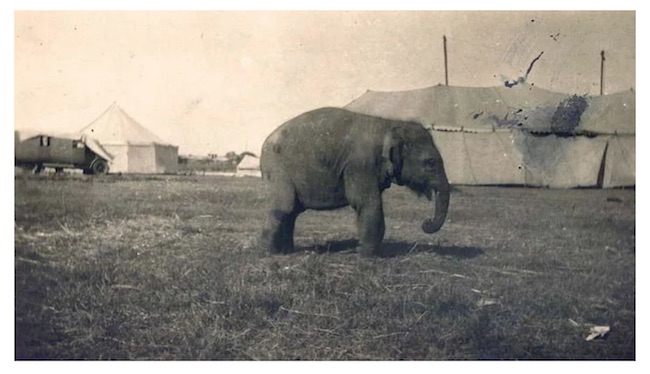
Photo courtesy Enfield Historical, c.1920
Another pastime enjoyed by both youths and adults, alike, featured the arrival of the circus. E. Earl Harding (1895-1980) grew up with his parents at their home at Five Corners. He reminisced about the annual event that often took place in a field just south of his home near the present day bowling alley on Oak Orchard Road. His remarks follow:
“When the circus came to town it was a really big deal for us kids. It generally came by rail road and set up in a field north of Albion, that being very close to my home. All of us kids would get up early in the morning and go up to watch them unload, and help where we could. We would watch the elephants walk down, and watch them set up tents. If you could get a job carrying water or something, maybe you could get a pass into the circus. That night after the circus, they would load, and be on their way the next morning. The next morning we would get up early and go up to the circus grounds and snoop around. We were quite apt to find a few coins on the ground that people had lost out of their pockets. You just went to look around and see what you could find. It kind of prolonged the excitement of the circus.”
Earl Harding talked about church life, which loomed large in the life of nearly all pioneer families. In addition to the spiritual aspects of attending church service every Sunday without fail, he also had fond memories of the Sunday School picnics held at the lake. His remembrance follows:
“When it came time for the Sunday School picnic down at Lake Ontario, Dad would load up the surrey and all of us kids with our lunches and we’d go down to the lake for the Sunday School picnic. Well we wouldn’t get there an awful lot before it was time to eat. After eating, we’d get a swim and a little time to play, and then it was time to start for home again. You didn’t go very quickly. Dad had a team on the surrey and that pulled us along a pretty good clip. It took about an hour and a half to get from our farm to Point Breeze and the same going back. It was a big day! We went to the Oak Orchard side of the Point. At that time there was a big hotel on the west side. Along the front of the hotel was a row of bath houses where you could change your clothes. It was a huge hotel with a big veranda around it, both an upstairs and a downstairs veranda.”

















